ESO
Latest
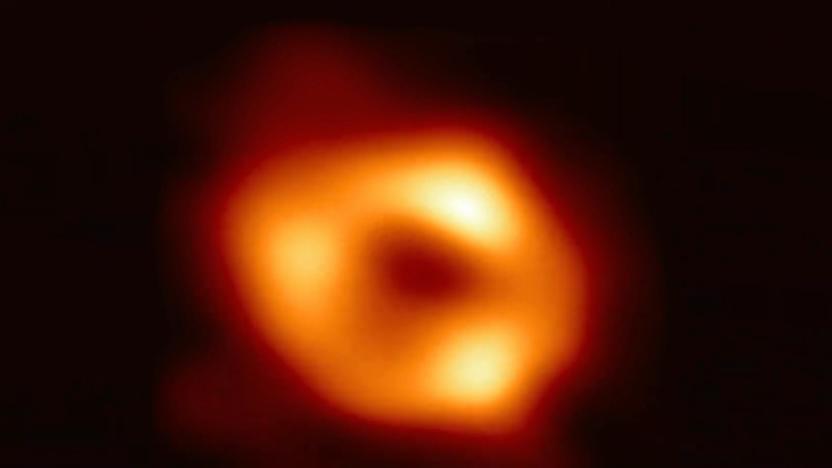
Scientists reveal first image of the black hole in the center of our galaxy
Scientists have captured the first image of the black hole at the center of the Milky Way.
Jon Fingas05.12.2022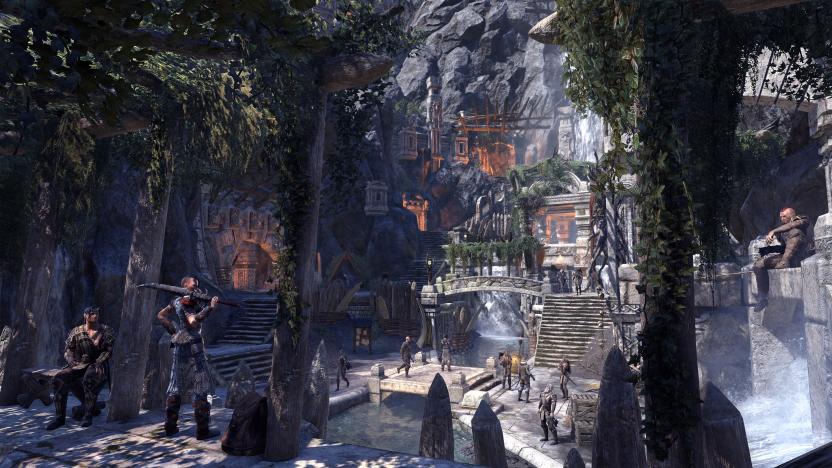
Elder Scrolls unveils a choose-your-own Twitter adventure
To promote the release of the Elder Scrolls Markarth game pack, Bethesday ANZ is offering a choose your own adventure-type story on Twitter.
Steve Dent12.07.2020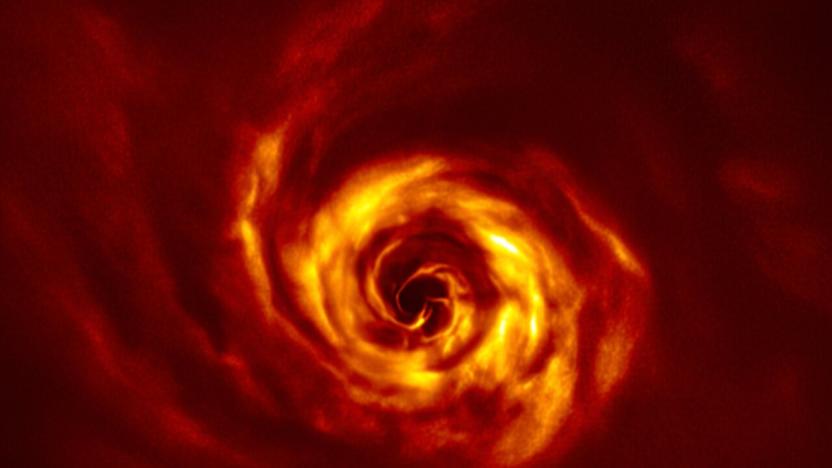
Astronomers may have witnessed a planet's birth
Scientists believe they have observed a planet being formed for the first time.
Christine Fisher05.20.2020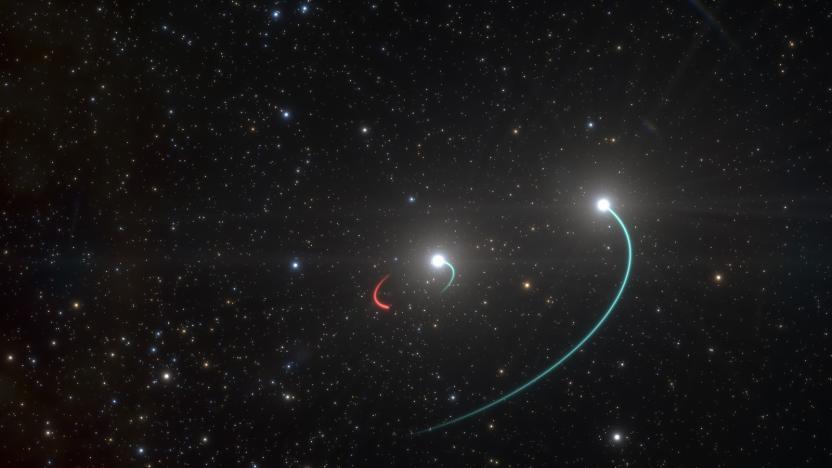
Scientists find the closest known black hole to date
Astronomers have found the closest black hole known so far -- just 1,000 light-years away.
Jon Fingas05.06.2020
This is the first real picture of a black hole
Yes, it happened. After years of relying on computer-generated imagery, scientists using the Event Horizon Telescope have captured the first real image of a black hole. The snapshot of the supermassive black hole in the Messier 87 galaxy (about 55 million light years away) shows the "shadow" created as the event horizon bends and sucks in light. It also confirms that the black hole is truly huge, with a mass 6.5 billion times that of the Sun. As you might imagine, taking this picture was tricky -- it required worldwide collaboration that wasn't possible until recently.
Jon Fingas04.10.2019
Watch the first ever image of a black hole be livestreamed here
What does a black hole look like? Black, probably. And big. That sounds pretty vague, but as the gravitational forces of a black hole are so strong even light is overpowered by them, we've never had a comprehensive image of one before. Until now. Today, scientists from six cities around the world will unveil the first ever image of a black hole -- called Sagittarius A* -- and you can watch the historic announcement live online. (Update: the image has been released. Check it out here!)
Rachel England04.10.2019
Astronomers captured the first image of a baby planet
Thanks to European Southern Observatory's (ESO) Very Large Telescope, a group of astronomers have taken the first photograph of a planet being formed around a young dwarf star called PDS 70. The planet has been named PDS 70b. You can clearly see the newly forming planet, which is the bright spot to the right of the black dot in the middle of the picture. The black area is the star, which has been blotted out with a coronagraph. This allows astronomers to see details that would otherwise be overwhelmed by the light of PDS 70b.
Swapna Krishna07.02.2018
First observed interstellar object is a speedy, cigar-shaped asteroid
Last month, astronomers running the Pan-STARRS 1 telescope in Hawaii spotted an intriguing object moving through our solar system and it became clear pretty quickly that the object, whether it was a comet or an asteroid, had come from outside of our solar system. Now, in a paper published this week in the journal Nature, researchers have described the interstellar visitor, dubbed 'Oumuamua, including its peculiarities as well as its similarities to objects originating in our own solar system.
Mallory Locklear11.21.2017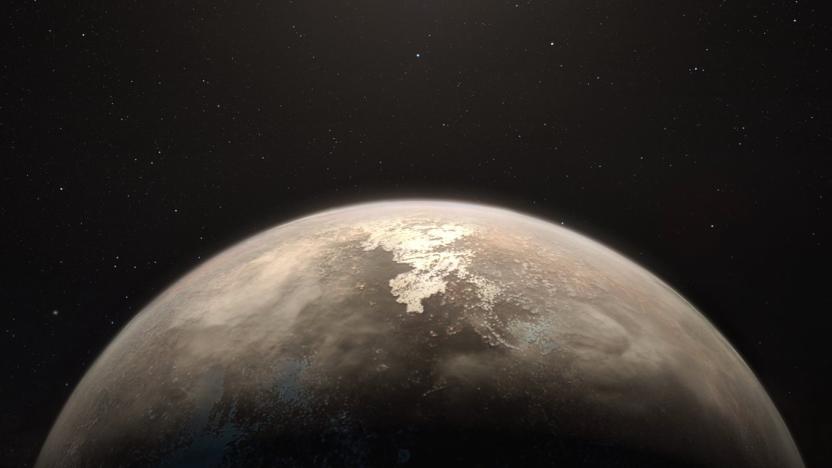
Neighboring exoplanet could be one of the most habitable
A team of astronomers have discovered an Earth-like exoplanet that's only 11 light-years away and is one of the most potentially habitable celestial bodies we've ever come across. Ross 128 b is the second-closest temperate planet -- or planets with temperatures that could support life -- that we know of, with the closest being Proxima b that's merely four light-years away.
Mariella Moon11.16.2017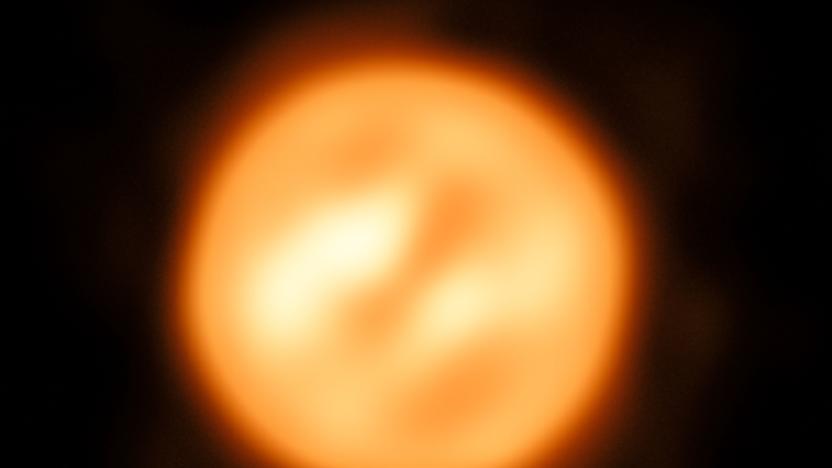
Astronomers capture best image yet of a star other than the sun
See that photo above? It might look a lot hazier than the HD photos you're used to, but it's the best and most detail image of a star other than our own sun that we've captured thus far. A team of astronomers led by Keiichi Ohnaka have used ESO's Very Large Telescope Interferometer in Chile to map Antares, one of the largest known stars and the brightest in the Scorpius constellation. Antares, a red supergiant, is visible to the naked eye as a reddish, twinkling star, but we've never seen it this close before.
Mariella Moon08.25.2017
Construction starts on the world's largest optical telescope
After several years of planning and no shortage of financial anxiety, construction has officially started on the Extremely Large Telescope. Contractors are now building the main structure and dome of the Chile-based observer ahead of its initial service in 2024. That's a long time to wait, but this is no mean feat. With a 43-yard aperture, this promises to be the world's largest optical telescope for sometime, even compared to future or in-limbo projects like the Thirty Meter Telescope. Those gigantic dimensions will help it capture far more light, giving astronomers the chance to spot particularly distant galaxies, find small planets and capture more details of larger planets.
Jon Fingas05.27.2017
ESO will upgrade its Very Large Telescope to hunt for exoplanets
The European Southern Observatory's Very Large Telescope is getting an upgrade. ESO signed an agreement with Breakthrough Initiatives, a program created to search for extraterrestrial intelligence, to modify its infrared instrument called VISIR (VLT Imager and Spectrometer for mid-Infrared). Once it's done, the observatory in the Atacama Desert of northern Chile will easily be able to spot exoplanets in the Alpha Centauri. According to ESO, the astronomers' discovery of a habitable planet in our neighboring star system late last year "adds even further impetus to this search."
Mariella Moon01.10.2017
Scientists find a tailless comet from Earth's early days
It's well-established that the many asteroids and comets in the Solar System are the result of its violent early history, but finding an untouched example from the inner system is difficult. However, an astronomy team has discovered just that -- and it might shed a lot of light on our homeworld's early days. Thanks to both Pan-STARRS 1 and the Very Large Telescope, they've spotted a tailless, predominantly rocky comet (C/2014 S3) that has all the telltale signs of a "pristine" asteroid formed in the inner Solar System around the same time as the Earth, roughly 4.5 billion years ago. Its long, 860-year orbit hints that it was kicked towards the Oort Cloud (the system's extremely distant bubble of comets and other icy bodies) in the ancient past and only recently got pulled back toward the Sun.
Jon Fingas05.01.2016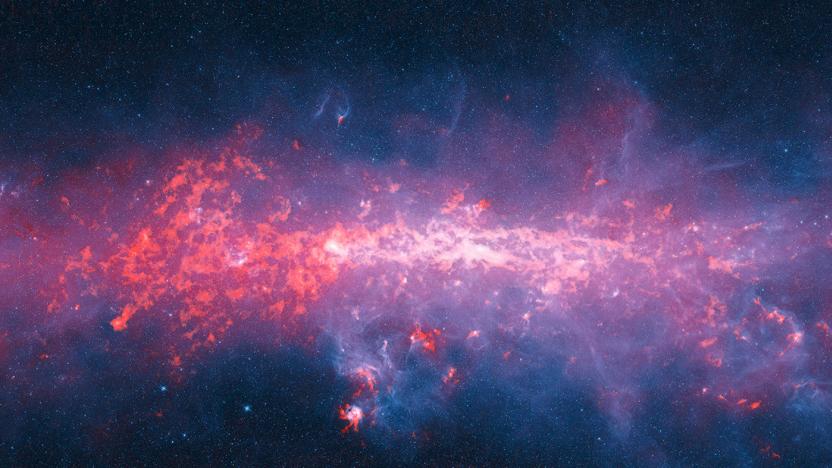
APEX telescope maps Milky Way's star-forming regions
The APEX telescope in Chile has completed its biggest project, resulting in the most complete view of the cold galaxy we've ever seen. It spent almost a decade peering into the skies for the APEX Telescope Large Area Survey of the Galaxy or ATLASGAL in submillimeter wavelengths, which fall in between infrared light and radio waves. Observing the universe in those wavelengths allowed the telescope to see all the cold gas and dust in the galactic plane that's visible from the southern hemisphere. In the image above and the video below the fold, you can see those cold clouds as bright red blotches that wouldn't look out of place in an abstract painting.
Mariella Moon02.25.2016
Astronomers spot a mid-sized black hole
Black holes typically come in one of two sizes: stellar mass and supermassive. Astronomers believe that there are black holes that fit between these two extremes but finding them has proven difficult, with only a half-dozen candidates currently known. Well, as of today, the tally rises to half-dozen plus one. Scientists at the University of Maryland and NASA's Goddard Space Flight Centre have found another mid-sized black hole, weighing in at 5,000 times the mass of our Sun.
Christopher Klimovski09.24.2015
Astronomers find evidence of oldest stars in ancient galaxy
For the longest time, Population III stars, which formed in the very early years of the universe, were nothing but a theory. Now, some astronomers led by David Sobral from the University of Lisbon in Portugal believe they've found evidence of these ancient, massive celestial bodies within an extremely bright (and old) galaxy. The team used ESO's Very Large Telescope, along with the Hubble Telescope and Japan's Subaru Telescope in Hawaii, to peer into an old part of the universe. There, they discovered several distant but luminous galaxies, including Cosmos Redshift 7 or CR7, which formed merely 800 million years after the Big Bang.
Mariella Moon06.18.2015
Here's your clearest view yet of star formation in the early universe
Spotting anything at the edge of the known universe is difficult, but scientists have just managed to get a surprisingly sharp view. They've used the ALMA telescope array's imaging and spectral info to visualize a galaxy about 11.4 billion light years away (2.4 billion years after the Big Bang) in unprecedented detail -- enough to see clumps of stars that were still forming at the time. The key was taking advantage of a special gravitational lensing effect, an Einstein ring, where Earth is in perfect alignment with both the target galaxy and an in-between galaxy distorting and magnifying the target's light. Researchers used modeling to correct for that distortion and see what the ancient celestial body really looked like. It's not a perfect picture (the intermediary galaxy's black hole is obscuring things), but it's still humanity's best peek yet at what was happening well before our planet even existed. [Image credit: ALMA (NRAO/ESO/NAOJ)/Y. Tamura (The University of Tokyo)/Mark Swinbank (Durham University)]
Jon Fingas06.09.2015
Here's how the largest galaxies die
Like it or not, all galaxies will eventually die. But have you wondered just how they meet their grisly ends? Researchers now have a good idea. They've studied 22 very large elliptical galaxies about 10 billion years old, and have discovered that these celestial bodies die from the inside out. The older they get, the more red giants (that is, dead stars) exist at their centers -- stars keep forming at the periphery up until the galaxy's last moments.
Jon Fingas04.20.2015
Dark matter is (probably) more complex than you think
Scientists typically believe that dark matter, for all of its mystery, behaves in a simple way: if one clump encounters another, the two interact solely through gravity. However, researchers using both Hubble and the Very Large Telescope have published findings which suggest that there's more involved. They've noticed dark matter (the blue lines in this picture) lagging behind a galaxy due to friction, hinting that there are factors beyond gravity at work. It's not certain whether the source of this friction is a familiar phenomenon or something entirely undiscovered, but it's definitely not the usual culprit.
Jon Fingas04.20.2015
Here's an unprecedented peek into an interstellar nursery
This is where stars are born. Nearly 30 infant blue-white stars (100,000 times brighter and 50 times bigger than our own Sun), which are formed by collapsing hydrogen gas clouds in the southern Ara constellation, constitute star cluster NGC 6193. The European Southern Observatory's VLT telescope, the first telescope to ever directly image an exoplanet, captured this unprecedented shot. You can revel in the full, uncropped glory of star formation over at the ESO.
Andrew Tarantola03.11.2015